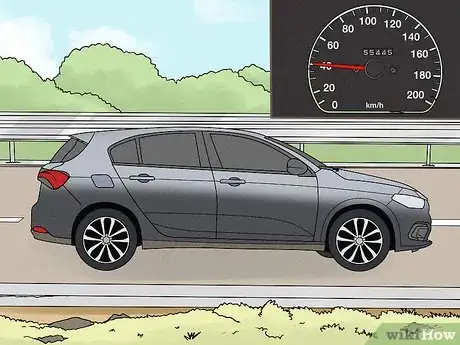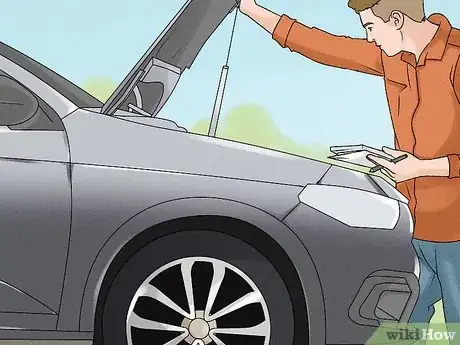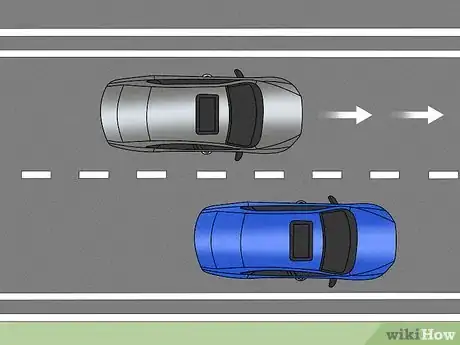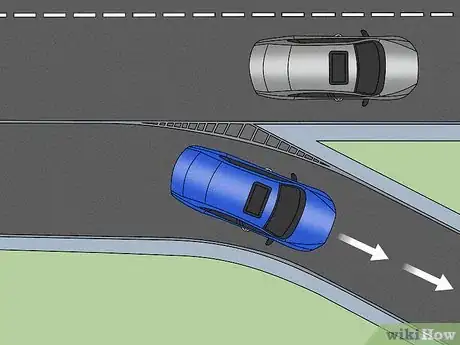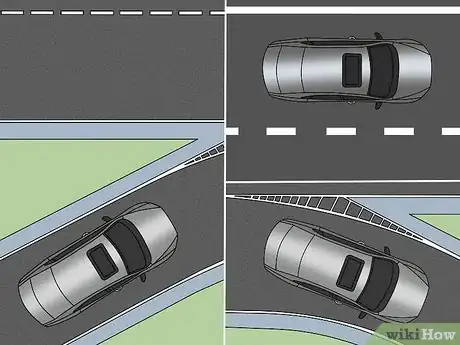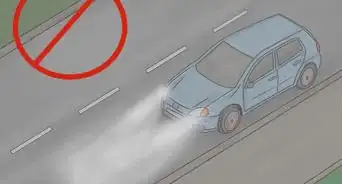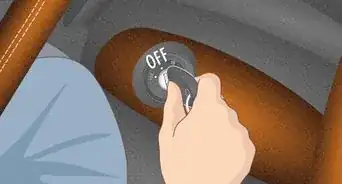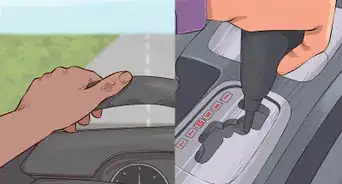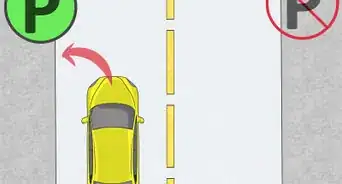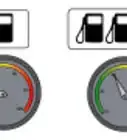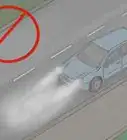This article was co-authored by Simon Miyerov. Simon Miyerov is the President and Driving Instructor for Drive Rite Academy, a driving academy based out of New York City. Simon has over 8 years of driving instruction experience. His mission is to ensure the safety of everyday drivers and continue to make New York a safer and efficient driving environment.
There are 10 references cited in this article, which can be found at the bottom of the page.
wikiHow marks an article as reader-approved once it receives enough positive feedback. In this case, 84% of readers who voted found the article helpful, earning it our reader-approved status.
This article has been viewed 333,781 times.
Freeway driving is an essential part of learning to operate a car, driving on the highway can save you time and get you to places easier.[1] Driving on the highway can be a little scary at first, but is simple once you understand everything.
Steps
-
1Pick a highway and a time. It's best to start when you know the highway will not be crowded. Weekends and evenings are best. Pay attention to the traffic reports in your area. Make sure you know exactly where you're going and you don't have any place to go for a while.
-
2Learn to operate the car at lower speeds first. Make sure you know all the laws and "rules of the road," including what different kinds of lanes look like and the local speed limits.[2]Advertisement
-
3Make sure your car's brakes, lights, turn signals, steering, transmission and all other parts are working safely.[3] Get the car inspected and fixed if necessary. The freeway is the worst possible place for a breakdown.
-
4Start on a day when the weather is clear and dry. Darkness and inclement weather make driving more difficult and should not be the beginner's first step.[4]
-
5Start driving from your driveway, then head for the freeway on-ramp. Don't take the on-ramp too fast, but when you come off it you should be going close to the speed of freeway traffic (whatever that may be at the time).
-
6As you come up the on-ramp, use your turn signal, check your blind spot and mirrors, look forward again and merge onto the highway.[5] You must watch for cars on the freeway and adjust your speed to enter the freeway safely. Although many people will change lanes to the left to give merging cars more room, it is not their responsibility to let you onto the freeway. Once you've safely merged onto the freeway, match your speed to the flow of traffic.
-
7Practice changing lanes as you cruise down the highway. Use your turn signal, mirrors, and glance at your blind spot every single time. Remember when driving on freeways that you should always stay in the furthest lane to the right unless you are passing a slower moving vehicle in front of you. You have probably seen signs which read, "KEEP RIGHT EXCEPT TO PASS."[6] If everyone followed this rule traffic congestion would be much less severe. If you are in the 'faster' lanes (left lanes) and there is a large space in front of you and many cars behind you YOU ARE OBSTRUCTING TRAFFIC. Safely change lanes toward the right to allow traffic to pass. It is not your job to enforce speed limits by obstructing traffic on the freeway.[7]
-
8Once you're comfortable changing lanes, try passing other cars. Make sure to give them lots of room, and don't ever cut in front of anybody.[8]
-
9When you're ready to get off the highway, find an appropriate off-ramp and get in the correct lane, using the steps to change lanes. As soon as the off-ramp breaks away from the main highway, start slowing down, on the ramp there might be a speed limit sign for you to follow.[9]
-
10Once you're off the highway, you can go home, or look for another on-ramp and practice more highway driving.[10]
Expert Q&A
Did you know you can get expert answers for this article?
Unlock expert answers by supporting wikiHow
-
QuestionHow do I get over my fear of driving on the highway?
 Simon MiyerovSimon Miyerov is the President and Driving Instructor for Drive Rite Academy, a driving academy based out of New York City. Simon has over 8 years of driving instruction experience. His mission is to ensure the safety of everyday drivers and continue to make New York a safer and efficient driving environment.
Simon MiyerovSimon Miyerov is the President and Driving Instructor for Drive Rite Academy, a driving academy based out of New York City. Simon has over 8 years of driving instruction experience. His mission is to ensure the safety of everyday drivers and continue to make New York a safer and efficient driving environment.
Driving Instructor
-
QuestionWhat's the safest lane to stay in?
 Community AnswerYou should always drive in the right lane except to pass.
Community AnswerYou should always drive in the right lane except to pass. -
QuestionHow do I know when I'm ready for the highway?
 Community AnswerIt all depends on your confidence. You should make sure you feel completely confident and comfortable on back roads before attempting the highway.
Community AnswerIt all depends on your confidence. You should make sure you feel completely confident and comfortable on back roads before attempting the highway.
Warnings
- If you have a learner's permit, be sure to check if your state's law allows you to drive on expressways while learning to drive. Some states may allow it, while others do not.⧼thumbs_response⧽
References
- ↑ https://driversed.com/driving-information/city-rural-and-freeway-driving/freeway-driving.aspx
- ↑ Simon Miyerov. Driving Instructor. Expert Interview. 4 December 2019.
- ↑ https://drivinglife.net/how-to-check-your-car/
- ↑ Simon Miyerov. Driving Instructor. Expert Interview. 4 December 2019.
- ↑ http://www.driversedguru.com/drivers-ed-training-exercises/stage-4/stage-4-highway-merging/
- ↑ https://www.mit.edu/~jfc/right.html
- ↑ http://www.driversedguru.com/drivers-ed-training-exercises/stage-4/stage-4-changing-lanes-on-the-highway/
- ↑ https://www.dmv.ca.gov/portal/dmv/detail/pubs/hdbk/merg_pass
- ↑ https://driversed.com/driving-information/city-rural-and-freeway-driving/exiting-a-freeway.aspx
- ↑ https://freedmvpracticetests.com/blog/why-highway-driving-practice-is-important
- ↑ Simon Miyerov. Driving Instructor. Expert Interview. 4 December 2019.
- ↑ https://www.nhtsa.gov/risky-driving/seat-belts
About This Article
Driving on the highway for the first time might seem intimidating, but by learning how to get on and off the highway and practicing a few safety precautions, you’ll be doing it in no time! Start by choosing a time to practice when there’s less traffic, such as between 9 a.m. and 12 p.m. so you don’t have to deal with busy roads. To enter the highway, drive down the entrance ramp, accelerating gradually so you get up to speed. Then, move over to the left so you’re in the right-hand lane. Make sure to avoid driving parallel to other vehicles, since this will put you in their blindspot, meaning the other driver can’t see you. You should also stay in the center or right-hand lanes when you're driving, since the left-hand lanes are only used for passing cars. Remember to leave around 4 to 6 seconds of distance between you and the car ahead so you have time to slow down if necessary. When you’re ready to leave the highway, turn on your right turn signal and move into the exit lane. For tips on how to pass cars on the highway, keep reading!

